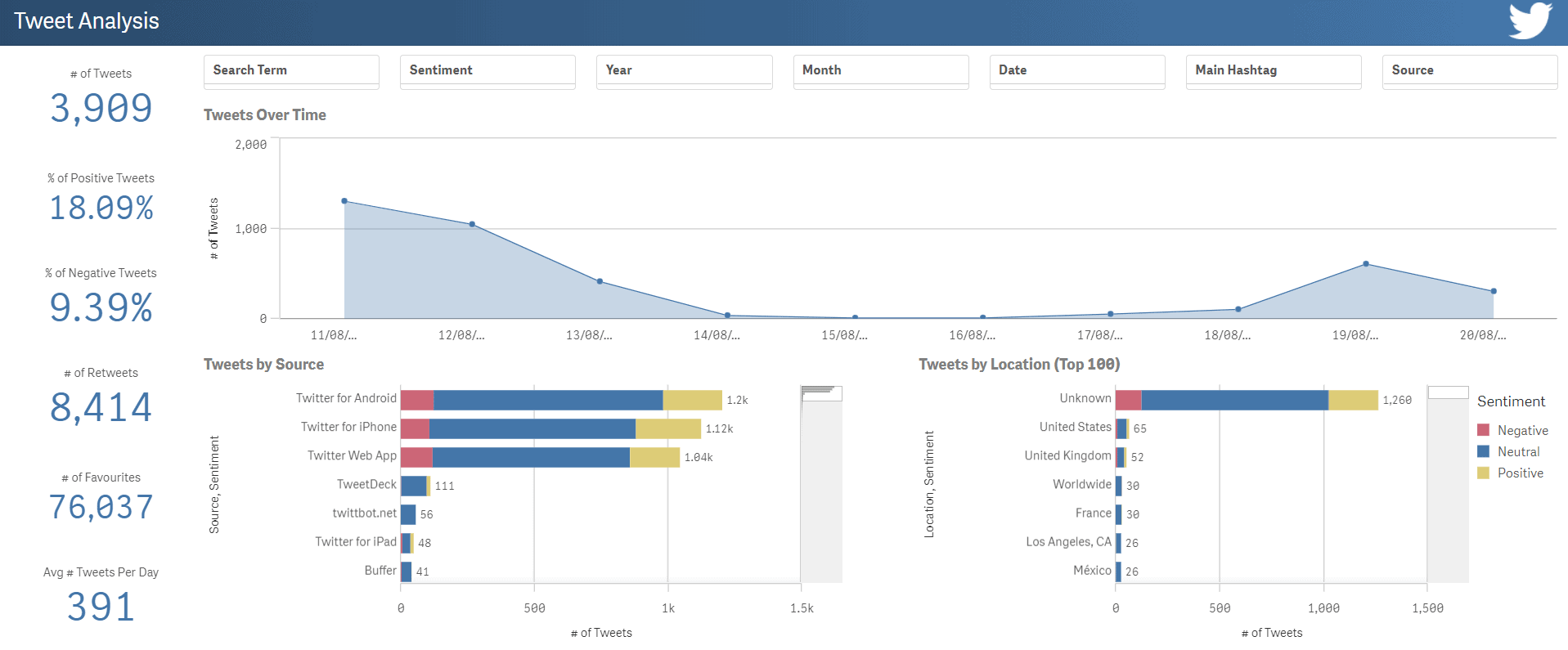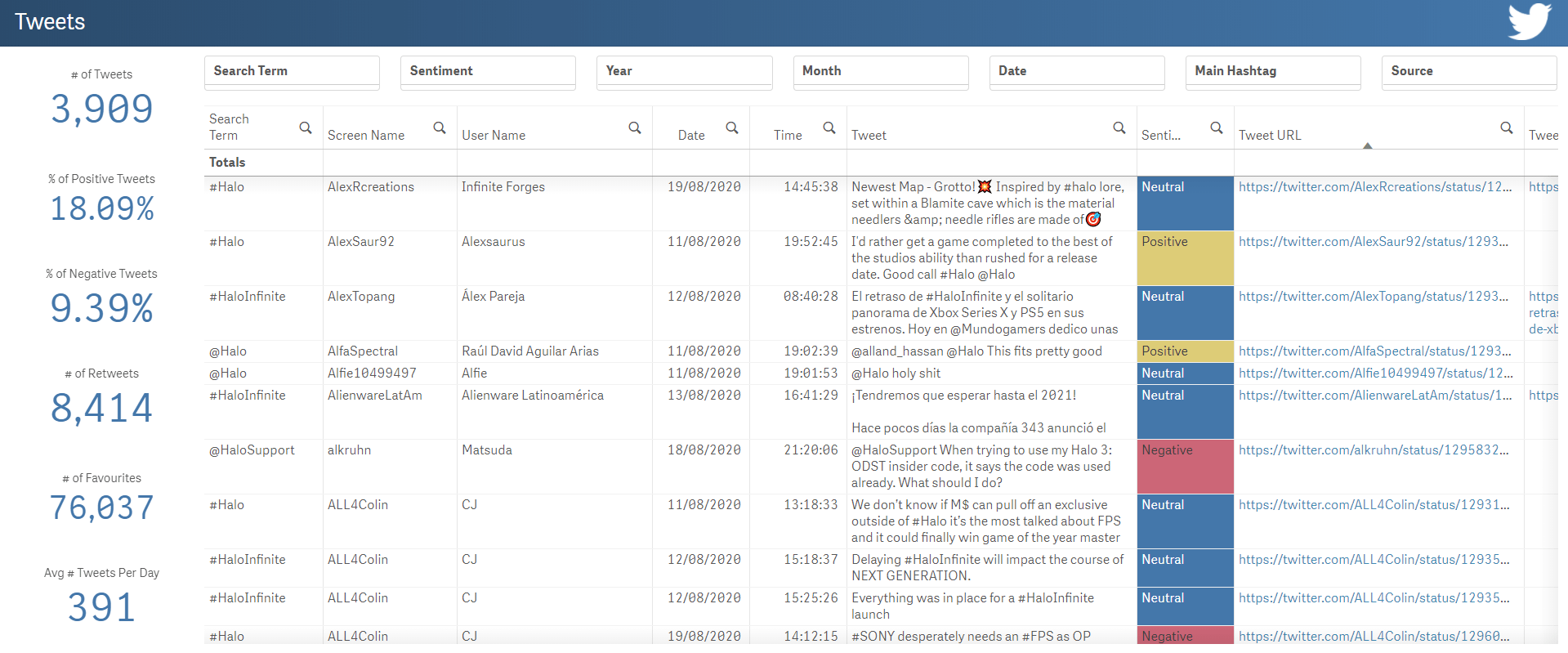Construction Industry Webinar: From Code to Compliance – Mastering the Building Safety Act 2022
Join us for our upcoming live webinar – “From Code to Compliance: Mastering the Building Safety Act 2022” 🗓️ Date:
Read articleAny business with a social media account is essentially opening up their reputation to the world, in exchange for better exposure.
That means if your company makes a mistake, if there’s a service outage, if a supplier or contractor suffers from an issue that impacts your customers – users will be vocal about what it is they’re unhappy with.
This is particularly obvious for companies who use Twitter for customer service. More often than not, users don’t tweet about the good experience they’ve had.
Social sentiment analysis for social media shows you whether social media users feel positively, negatively, or neutrally about your company.
In terms of the social sentiment analytics tool we’ll explore later, social sentiment analysis is perfect for any business with one or multiple Twitter accounts or hashtags, or any business that may be reviewed through Twitter or where any complaints may be directed to them through Twitter.
Reasons Companies Analyse Social Sentiment
Improve your service. Get high-level oversight into whether customers believe your business is performing well, or whether there is room for improvement. You could monitor trends over time and see whether the percentage of positive or negative tweets is increasing or decreasing. It is another way to collate feedback from customers.
Understand public opinion. Using more in-depth analysis, you can dig deeper into the individual posts or tweets to find out what customers expect, and what you can improve. See the number of posts about you over time, and delve into spikes in tweets to find out why. Find out what the public think of your business and find tactics to improve public opinion over time.
Find actionable insights. You’re probably already swimming in data and this isn’t to add more to your plate. True social media sentiment analysis doesn’t just offer you rows of numbers and percentages – it lets you immediately uncover deeper, actionable insights that help to make your business more competitive.
Let’s take a look at why businesses use social sentiment analysis. At a high level – and this doesn’t even include industry- or business-specific advantages – you can benefit from:
We implemented a bespoke social sentiment analysis application within QlikView for Nexus (Tyne & Wear Metro Service) – you can read their customer story here.
Nexus uses the social sentiment analysis app to monitor passengers’ tweets to meet passengers’ needs and increase satisfaction.
For example, there was a long-term issue the public had with ticket machines that Nexus discovered from analysing their data. Due to this, Nexus fixed the machines and modified them to be more in line with what customers wanted.
It’s vital that you know how you’re being perceived online, discover issues before they become a problem, find ways to become more competitive, and improve your reach and reputation.
That’s why I’ve built a plug-and-play Qlik Sense app to immediately start seeing results. You simply add your Twitter handles and hashtags and the app will create an index of recent tweet from the last 6-9 days, up to the API limit of 1500 tweets per handle/hashtag. From then, it will add more and more data as time goes on.
It works using machine learning algorithms, AI, multiple APIs using Qlik Web Connectors – and you gain access to 4 powerful sheets within a Qlik Sense application that help you uncover actionable insights.
On top of the benefits I outlined before about social sentiment analysis generally, this app will help you to achieve the following benefits:
If you’re a competitive company who wants to better engage with customers, proactively solve issues, and improve your reach and reputation – this app is for you.
Let’s take a look at an example of the app in action.
To show you how the Twitter sentiment analysis tool works, we will use Halo, the Microsoft Xbox game, as an example.
In the first screenshot below, you can see we have aggregated Twitter data from Halo’s primary, customer support/service, and the Halo Championship Series accounts, along with their ‘owned’ hashtags, #Halo and #HaloInfinite.
The social sentiment app blends all of the data and outputs it into easy-to-understand visualisations.
You get an overview of the number of Tweets at or about the Halo accounts/hashtags, and the general sentiment of them – whether positive, negative or neutral.
Using Qlik’s filter options you can dig into data on a very granular level, such as by a month or day or week – if you’ve had social media campaigns running, for example. Learn how successful social campaigns have been and what effects they’ve had.
You could analyse all of your data, or just one account/hashtag, or your competitors’ accounts. The possibilities are endless.
In the next screen, we have Tweet Analysis. This looks at the popularity of the accounts/hashtags and we can see spikes in tweets over time. What’s interesting in this example is that on 11th August 2020 it was announced the game Halo Infinite was postponed to 2021. In the below screenshot, you can see a huge spike in tweets on this date.
If this was your business and you found a spike in negative sentiment or tweets about your business, you could delve into this further to find out why.

Using the next page, Retweets & Favourites Analysis, you can see who is garnering the most attention about your business.
This is a good way to find particularly unhappy or happy customers, to find opinions that are popular about your business, to find fans or ‘influencers’ you can work with for brand exposure, and to find your biggest fans or particularly outspoken critics.
The final page is a deep dive into individual Tweets. This page shows you whether they include your hashtag or account, what their Twitter handle is, when they tweeted, what they said (Tweet Analysis Screenshot 1).
Plus, there’s a link to the original tweet so you can see any attached image, comments, or engagement.

If you’d like to get started or learn more, simply get in touch for a chat and we’d be happy to discuss.
Here are the compelling reasons businesses should look to implement social sentiment analysis:
We understand there are many options to choose from and you want to make sure the tool you adopt is the right one for you.
"*" indicates required fields
Construction in Crisis! Written by Chrissie McAnelly, Cybit Data & Analytics Consultant – Construction Sector The construction sector is
Read articleBy Asiel Esgair – Cybit Data & Analytics Consultant – Public Sector & Local Authority In our
Read article